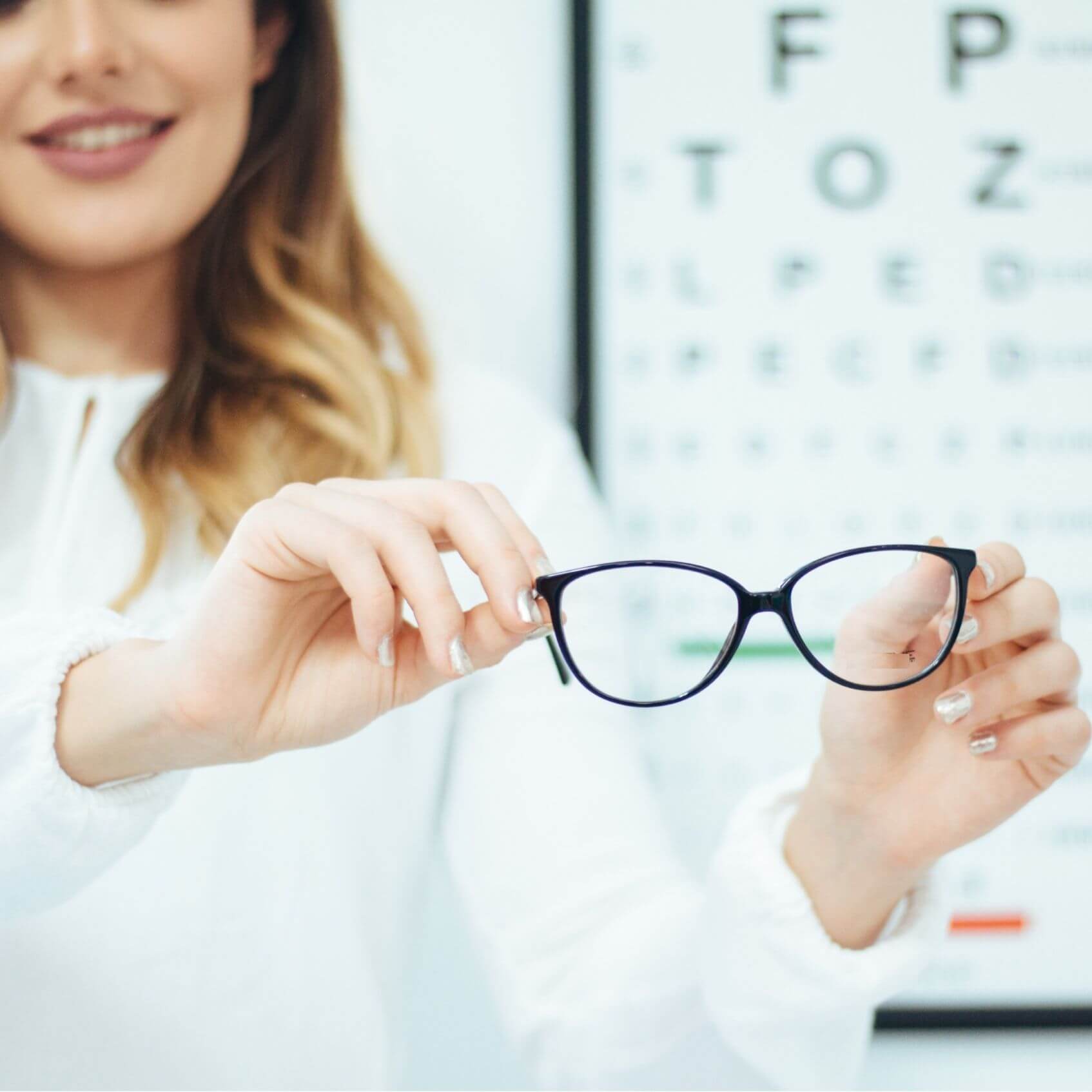According to a study from Data Reportal, the average American spends 7 hours looking at a screen every day. This shocking statistic shows why people ask, “What is eye strain?”
In this article, you’ll find everything you need to know about eye strain: symptoms, causes, health risks, and how to relieve eye strain symptoms.
So, what is eye strain?
According to the Mayo Clinic, eye strain is a common condition that occurs when your eyes are overworked or focus on a single thing for an extended period of time without proper rest.
- Eye strain is common among all age groups.
- Researchers blame increased screen time at school, work, and home.
- Relief is possible with specialized lenses and contacts
You can learn how to relieve eye strain and prevent it from affecting your day-to-day life.
Symptoms of eye strain
Wondering what eye strain feels like? Symptoms vary from person to person but include:
- Irritated, itchy, or dry eyes
- Blurred vision and sensitivity to light
- Acute headaches
- Difficulty concentrating
- Neck and shoulder pain
Causes of eye strain
Now that you know what symptoms you should be watching out for, let’s take a look at the causes of eye strain.
Again, what causes eye strain varies from person to person and include:
- Blue light overexposure
- Excessive screen time
- Driving for extended periods, especially at night.
- Reading in low light conditions
- Exposure to lens glare and UV light
- Overly bright lighting
- Poor posture
- Other eye conditions
What are the health risks of eye strain?
So far, studies have not determined the long-term effects of eye strain on your vision. So, it’s not a serious medical condition.
Still, symptoms such as blurred vision and headaches make it hard for you to concentrate. Daily activities you once enjoyed feel difficult and cause more irritation and eye fatigue.
Thankfully, we know what risk factors contribute to eye strain, how to relieve eye strain, and how to prevent it.
Who’s at risk for eye strain?
According to the Cleveland Clinic, eye strain can be triggered by seemingly unrelated conditions or circumstances. The following circumstances increase the probability of experiencing eye strain:
- Uncorrected Vision
- Muscle Imbalance
- Extreme Fatigue
- High Levels of Stress
As you can see, risk factors can be physical and psychological. Visit our doctor for an eye exam if you experience a combination of these risk factors and symptoms like headaches.
It’s easy to miss the connection between eye strain and the above conditions.
Learn How to Relieve Eye Strain
Today, eye strain affects most people in the United States. Some experience severe and chronic irritation. Others deal with minor and occasional discomfort.
What do these two groups do to experience eye strain differently? The answer is actually pretty simple.
Avoid jobs that cause eye strain & delay recovery
If a person engages in activities that expose their eyes to light sources for an extended period, it’s more likely that they will report feelings connected to eye strain.
Here’s what’s essential for recovery: the more serious your eye strain symptoms, the longer you will need to rest your eyes to recover.
But for many jobs—software engineers and developers being good examples—getting away from screens is not an option.
If this applies to you, schedule a time to get an eye exam. An eye strain diagnosis may provide you time to rest and recover.
Find available treatment options
If you want to know how to relieve eye strain, here’s an easy tip: stop staring at light! Maybe that was an accurate tip, but you cannot get rid of eye strain through lifestyle changes alone.
Check out these at-home treatment options:
- Humidifiers – Raising the humidity in a room counteracts the kind of dry conditions that lead to your eyes feeling itchy and dry.
- Pro Tip: Keep your humidifier in one room with the doors closed!
- Warm Compresses – Available at any drug store, a warm compress is like a warm, humid sleep mask that comforts irritated or tired eyes through heat.
- Pro Tip: Alternate warm compresses. Start with a damp compress, then move to dry compress. This treatment increases blood circulation and slows down tear evaporation.
- Soft Lighting – Screens provide enough light already; they don’t need help from bright fluorescent lights in your home or workspace.
- Pro Tip: Invest in floor lamps (inexpensive) or dimmer switches (a little expensive!)
- Artificial Tears – Artificial tears are the most powerful remedy for eye strain, but you need to be careful where you purchase them and what type you buy.
Where can I buy artificial tears?
Easy. We have the right artificial tears for sale at VC Vision Optical. These remedies are doctor-recommended and come with a personal recommendation from our lead optician.
Visit our store and talk to a team member about buying Oasis Tears and Oasis Tears Plus.
Try these simple lifestyle changes for eye strain recovery
With the average American spending 7 hours a day behind a screen, digital eye strain is by far the most common type of eye strain in our society. We know that effective at-home treatments are part of how to relieve eye strain, so let’s take a look at some simple lifestyle changes that help as well.
The American Optometric Association recommends taking the following steps to reduce the risk of eye strain:
- Give Your Eyes a Break: Follow the 20-20-20 rule. After a 20-minutes of consistent focus or screen time, go outside and focus on an object about 20 feet away for about 20 seconds.
- Blink More Often: When your eyes focus on something for a long period of time, you blink less. Make a conscious effort to blink more often. It will reduce your eye strain symptoms over time.
- Adjust Screen Position: If your work or school responsibilities require extended computer use, adjusting your screen position makes a huge difference. Position your computer screen about 4-5 inches below eye level and 20-28 inches away from your eyes.
How to prevent eye strain
If your typical daily routine involves spending countless hours behind a computer screen, VC Vision recommends considering the following when picking out your next pair of prescription eyeglasses:
- Blue Light Blocking Lenses: Blue light comes from digital screens on devices like cell phones and computers. Come to VC Vision, and we’ll apply a nearly invisible lens coating that blocks harmful blue light.
- Anti-Glare Lens Coating: Too much glare causes your eyes to work twice as hard to see objects on your computer screen, which can easily result in eye strain.
Adding an anti-glare lens coating and blue light lens coating to your next pair of prescription lenses can reduce glare up to 99% and offer fast recovery from existing symptoms.
Prevent eye strain with VC Vision’s custom lens coatings
VC Vision Optical in Fort Worth offers blue light lenses and anti-glare lens coatings that help prevent eye strain. Give us a call or schedule an appointment to get an eye exam, frames, and lenses with complete protection from eye strain.
Yep, preventing eye strain is as easy as asking a team member for a coating. And you get everything done in one hour or less.
When should I see a doctor?
In the vast majority of cases, eye strain doesn’t require a visit to an ophthalmologist.
There isn’t a formal diagnosis for eye strain, and treatment of the condition doesn’t require a medical doctor (MD) to treat it.
However, you should schedule a visit with our optometrist if your eye strain doesn’t go away over time.
Worried about eye strain? Schedule an eye exam.
VC Vision’s in-house optometrist brings 40 years of experience with eye exams and eye health to Fort Worth. Our team understands how to relieve eye strain for children, adults, and seniors on the northside.
Call us today or fill out our online form to schedule an eye exam.


